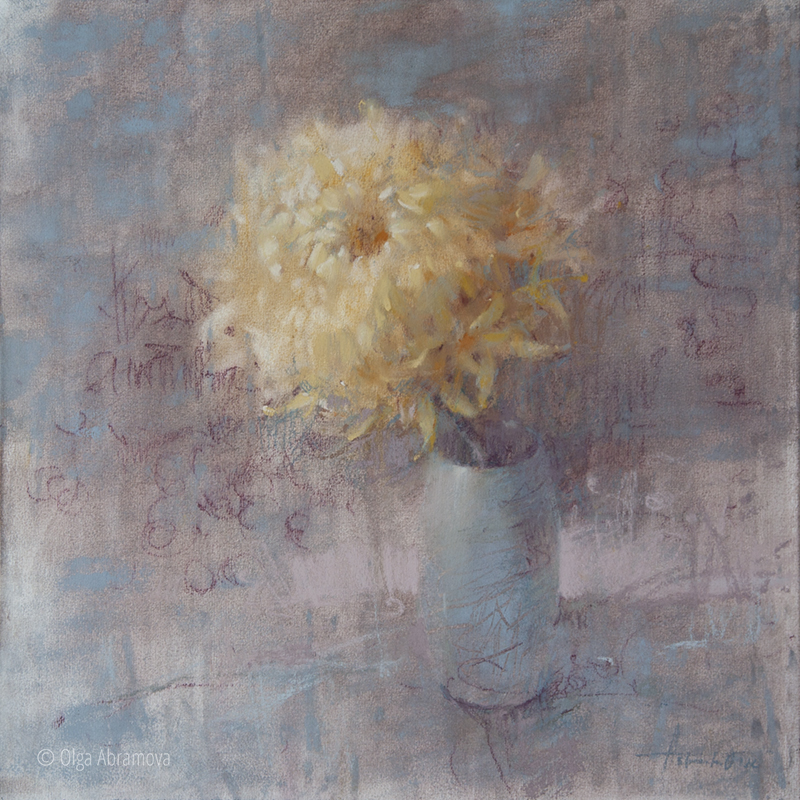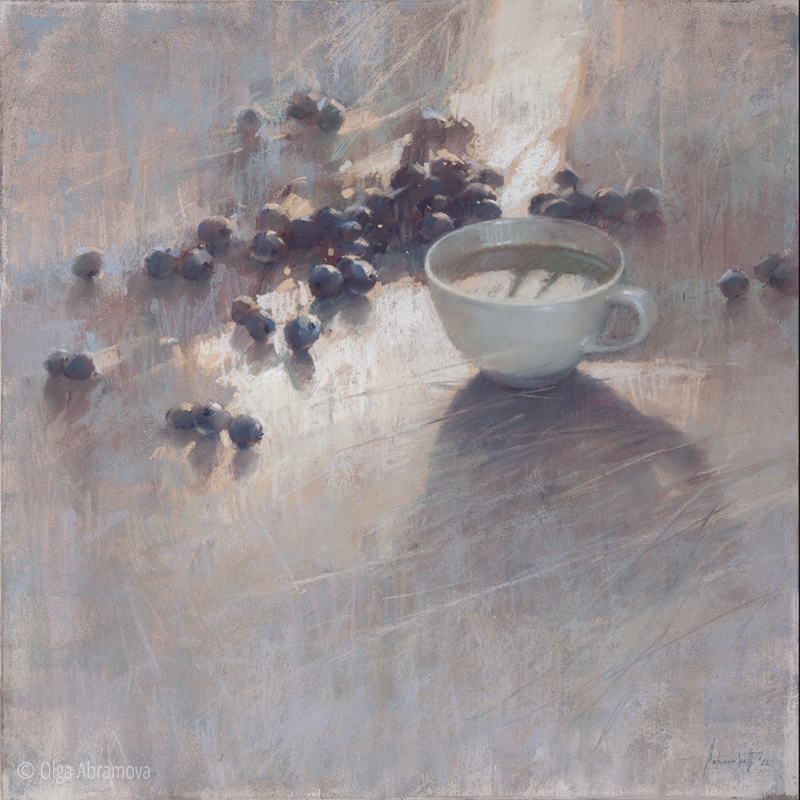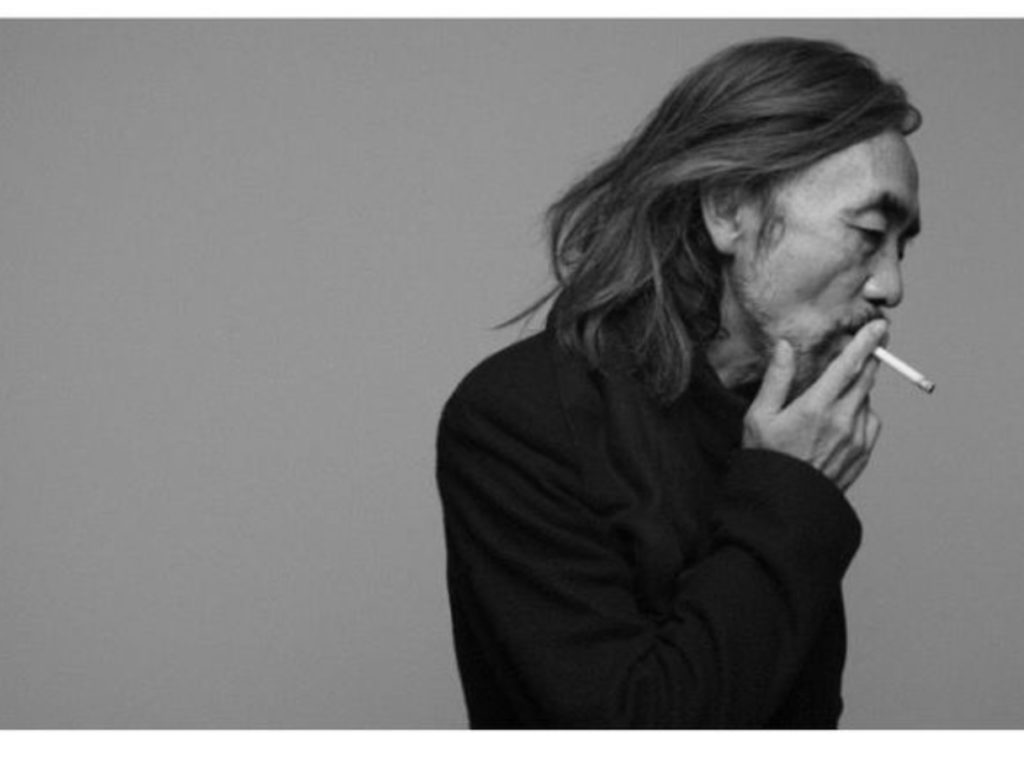Chrysanthemum, Yamamoto and blue charcoal
November 30, 2022
November 30, 2022
November, the month of silence and white grass, is almost over. Tomorrow is December – bright, noisy and expectant of a look at the whole year from its concluding stair. So long as the remains of silence haven’t vanished, I’ll tell you about some of the works I’ve had a chance to start and even partly finish.

I bought a chrysanthemum back in early November, brazen yellow and flamboyant, to add cheerfulness to my days without the sun. It stood on its long leg for a week, then I cut it just below its head and outfitted it in my favorite blue porcelain with cracks. It stood for a few more days, first alone, then with green tangerines, then alone again, and at some point I realized that if I waited a while longer, it would be gone, leaving no memory behind. Some of the petals had already withered when I started drawing it. The first layer was transparent, almost smoke-like, and actually it could already be enough – the picture looked so cohesive, especially paired with the last cups that I had painted for my Blueberry series.

The palette of my latest paintings changed for a very practical reason – I ran out of my favorite blue charcoal, began to work with sanguine… and that’s where the magic began. Unusual warmth appeared out of nowhere and cool shades began to sound in a new way. I looked at those first stages for two days and didn’t want to add anything. By the way, one of them stayed undisturbed – I felt like keeping that November meditative memory for myself.
Well, I finished the chrysanthemum, touched it a little at the very edges, removed minor splashes, added a few new hatches and trimmed the shape in some places. I might have overdone it a bit, but each painting has its own destiny.
One more thing added up to the way the picture looked, and it was my yet another immersion into the world of Yohji Yamamoto.

A few years ago, scrolling down Pinterest feed offered according to my taste, through the oblique cuts of black skirts and collars I got to a photograph of Yohji Yamamoto and fell in love with his image, with his philosophical look, with his calm expression, illuminated at times by a simple and sincere smile.
This November vibe was in sync with the philosophy of wabi-sabi and the deliberateness of Yamamoto himself, reflecting on meanings, fashion and people in Wim Wenders’s documentary “Notebook on Cities and Clothes”. The film was made in 1989 and Yohji was still young, but already wise.
In the film, two ideas, which chime with working on paintings, resonated with me in a special way. When asked where he started, Yamamoto answered that he built on material and texture and came to the form in the end. This is very similar to my favorite working process – I am interested in proceeding from the material, texture and spots to the form refinement or creation.
Yamamoto also said that he would like to combine the new and the classic. I am also trying to find this connection, with varying degrees of balance between these two directions.
…
And some news from the outside world.
This November, the magazine Pratique des Arts published an article about my work on the painting “Roses of Dinan”. The material for the article was collected by Elsa Parra, reporter, at the pastel exhibition Salon du pastel en Bretagne in France in August. The article is in French.
And a little earlier, the blog How to Pastel published an article about my work on paintings. Thank you very much to Gail Sibley for preparing this interview and asking me interesting questions. The article is in English.
See you later!










Love your work, so beautifully done. Looks so simple but not photographic.
Thank you!